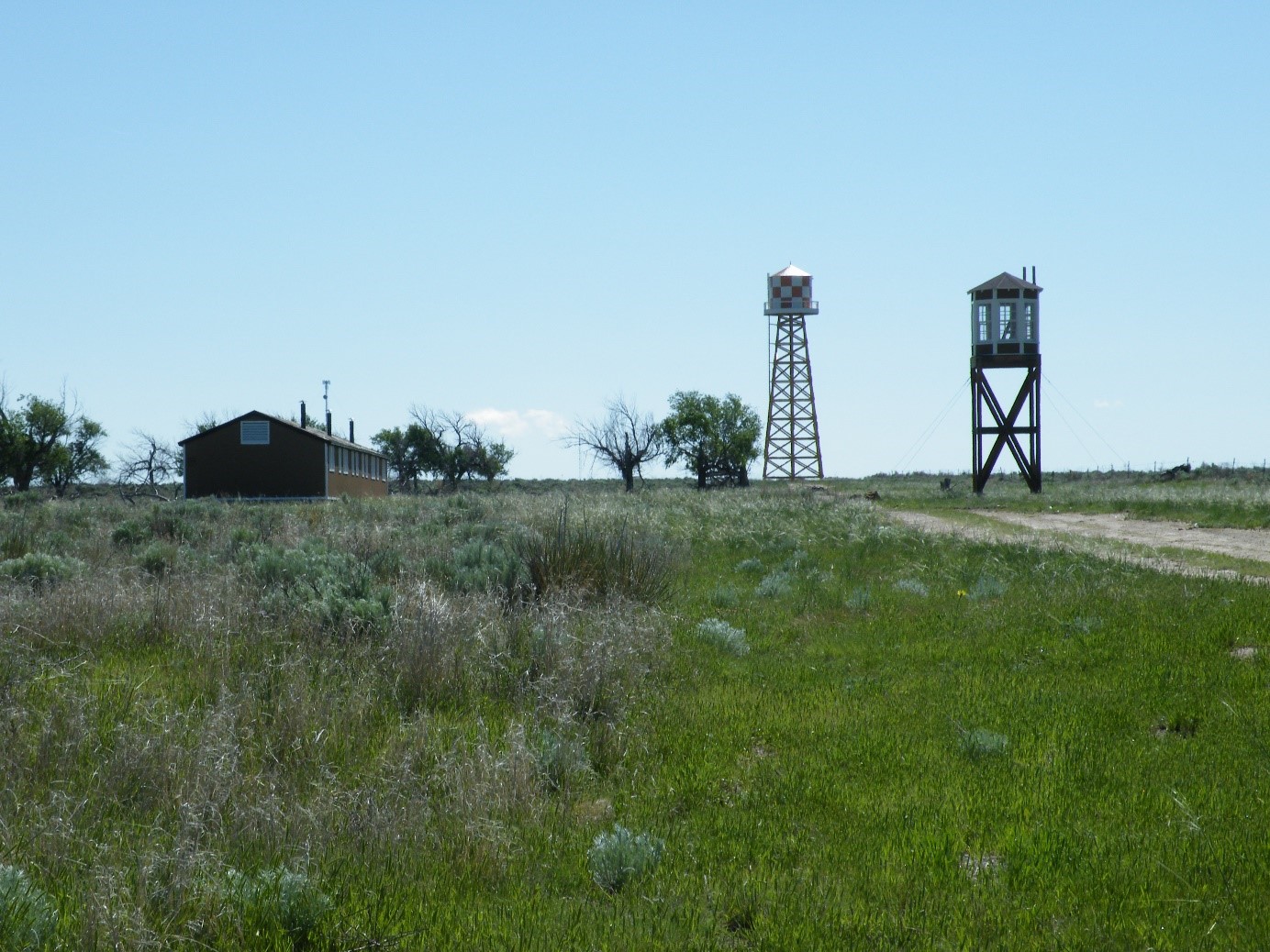Amache – Granada War Relocation Center
Granada, CO (Aug, 27, 1942 – Oct 15, 1945)


The Granada Relocation Center, better known by its postal designation, Amache, is located one mile outside the small town of Granada, in southeastern Colorado. Before the war, Granada was just one of the small farming towns that dotted the valley of the Arkansas River, which runs east a few miles north of the site. The area has a semi-arid climate, with low humidity and average annual rainfall. Summers are hot and dry with occasional severe thunderstorms or tornadoes. Winters are generally cold and dry but can bring heavy snowfalls. High wind speeds are common throughout the year and can create choking dust storms.
Amache opened on August 27, 1942, and reached a peak population of 7318 by February 1943. With the smallest overall population of the ten War Relocation Authority (WRA) camps, Amache was notable in other ways. It was the only relocation center established on private land and had other unique construction features. The entire site was over 10,000 acres, but only 640 acres, or one square mile, was devoted to the central camp area (see historical map for details). The majority of the project acreage was earmarked for the camp’s associated agricultural enterprises. The original population came from three main California geographic areas: the Central Valley, northern coast, and southwest Los Angeles. This original group was later joined by inmates transferred from other DOJ Detention Centers and WRA facilities, including over 900 from Tule Lake, CA, and over 500 from Jerome, AK. Around 10, 000 people of Japanese descent were detained in Amache while it was open, where they did their best to cope with life behind barbed wire. They engaged in both popular American activities and popular Japanese activities, reflecting the duality of their Japanese American heritage.
Internees ran a silkscreen shop and cooperative store, published a newspaper, and were successful at agricultural enterprises both within and outside of camp. There was other infrastructure, including a hospital where medical professionals helped care for the internees. Teacher and artists set up classes for the adult and children through the schools and recreational buildings. Amache had the highest rate of military volunteerism of all the camps. A total of 953 men and women from Amache volunteered or were drafted for military service during WWII. Of this number, 105 were wounded and 31 killed in action. Among those killed was Kiyoshi Muranaga who was awarded the Congressional Medal of Honor.
In 1944, Amache inmate Esther Takei became the first Japanese American from any site to resettle back to the West Coast. Widespread West Coast resettlement began soon after, and Amache officially closed on Oct 15, 1945. Amache was listed on the National Register of Historic Places on May 18, 1994, and designated a National Historic landmark on February 10, 2005.
Read the timeline for key events leading up to the establishment of Amache, while Amache was in operation, steps towards reconciliation, and current activities.